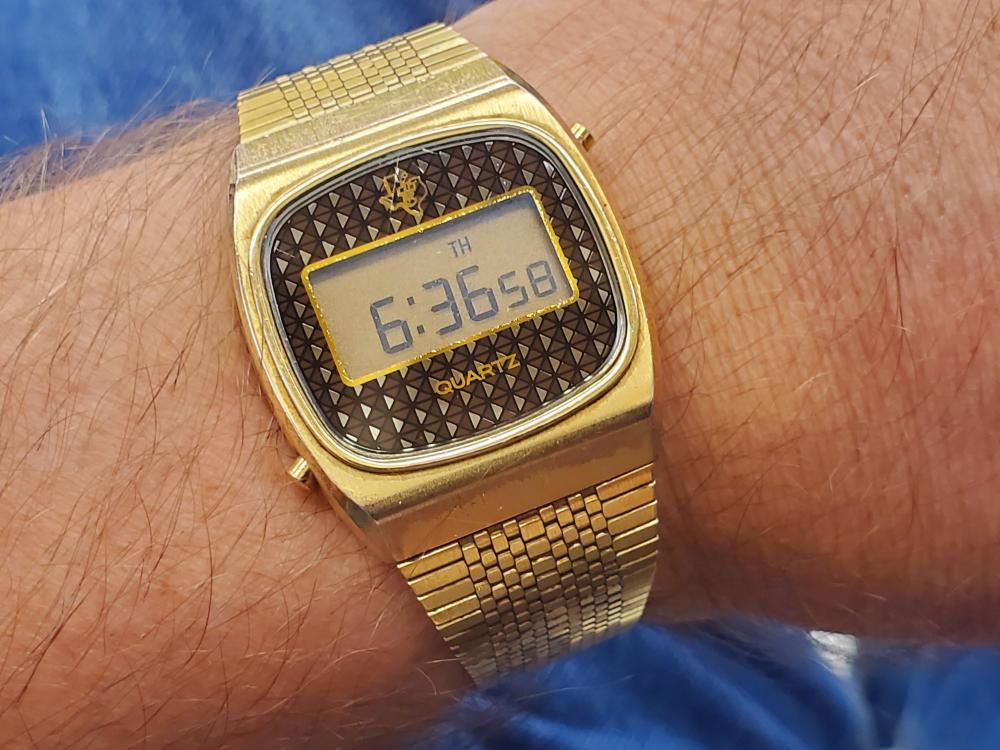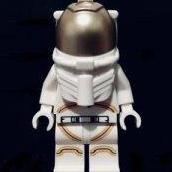Leaderboard
Popular Content
Showing content with the highest reputation on 03/13/20 in Posts
-
Hi In order to get a sembelance of order on the bench I build this tool holder, both tool holders rotate to enable easy access to the screw drivers, the flat bladed ones on the left and cross points on the left. My clock let down tools are fitted to the rear, probes etc down the sides. Saves scrabbling in a tin. heavy clock tools are stoed in two IKEA drawer units. Keeps the place tidy, untill I start working.2 points
-
There's a big difference between a preamp and a headphone amp. In the simplest terms, a preamp takes a very weak signal (or in the case of a watch mic, a very very very weak signal) and turns it into just a weak signal. A headphone amp turns a weak signal into a strong signal. Amplifiers also do impedance matching. A piezo element's impedance is primarily capacitive (around 27pF for the one I use), whereas a sound card's input impedance is resistive, typically around 10kΩ. A suitable preamp has corresponding input and output impedances. A headphone amplifier on the other hand takes a signal with about a 10kΩ impedance and converts it to a stronger signal with a much lower impedance, typically around 8Ω to 32Ω. Thus, a preamp is primarily a voltage amplifier to boost a weak signal, and a headphone amp is primarily a current amplifier to drive the low impedance of the headphones. The Schiit amp you mention has a selectable voltage gain of 0dB or 5.5dB (1x to 1.8x). The amplifier used by Watch-O-Scope has a gain 75dB (about 5600x). So they're not at all similar.2 points
-
I heartily recommend that you repeatedly practice all the steps involved on something of no value, until you're confident with the skills and results achieved.2 points
-
If you have let the hairspring out as far as it will go and it is good between the regulator in all positions. I'm assuming the balance has a good action. Then you need to try as I previously said a weaker mainspring.2 points
-
I wanted to add, on't discard the possibility it has just overbankend. Easy to check, nudge gently the balance wheel, it will turn one direction but not the other. If so, loosen cock screw, raise balance and rotate into the direction it wouldn't turn. It will start beating right away.1 point
-
Hi Old Hippy right on the money Further research into these clocks and I came up with just that Information "Wag On Th e Wall" clock no Alarm . The pendulum is approx three feet long and a small brass disc bob. Its back together now chains and all but no dial as it was cracked (wood) and the surround also wood needs quite a bit of attention, brass bezel and no glass. The glass is held in by brass pins through the bezel edge. A bit crude but thats how it is and I go with that. The pictures below are the chains before and after all that was used to clean them was a two hour soak in vinegar and a good scrub with a brass brush.1 point
-
Hi VW I would advocate the use of a watch broach in a pin vise to open the hole slightly. The method I would use is insert the broach attached to the pin vise and with no downward pressure on the vise/broach the weight of the vise in the vertical being enough and then retry, if not enough repeat and try again. the idea being to remove as little as possible each time . Cheers1 point
-
yes; "hand closeing tool" this could be just a hammer and anvil. a jury rig., But it is the measurment of the hole to get a press fit, is the art. vin1 point
-
Hi you seem to have got in a bit of a pickle here , I would recommend measuring the hour wheel and cannon , then replacing the hands with a new set. No string , glue. If that's out of the question buy a set of hole closing punches and close the holes in the hands for a better fit. Have a look at Esslingers web site in the USA they have tutorial one including measuring and fitting watch hands which you may find instructive Cheers.1 point
-
x10 is very strong, normal work should be done with 5x or even less. Get a loop also or you will dropping it all the time and getting face muscles strained.1 point
-
It doesn’t work that way. That is like asking if you wind a watch only part way will it lose time from when you fully wind it. The whole power of the main spring is distributed evenly.1 point
-
Finding new part for old watches may be very difficult. I suggest that you measure the mainspring and then use Cousins UK "mainspring finder" to get a best match. These are not very expensive and come ready to install from a roundel, saving the need for a mainspring winder.1 point
-
1 point
-
Just curious, have you ever produced a dial before? How are you going to paint it, airbrush or perhaps traditional brush with a artist touch? What about the indexes, will you detach and then reapply these small fiddly thingies? Not to mention, having some sort of logo is often desirable, how do you plan to do that? No matter how you will solve these small issues or the choice of the paint with the greatest albedo, I look forward to to see the results of you work, good luck!1 point
-
1 point
-
So, more than a year later I bought this "golden tool" and used it on a couple of diafix cap jewels (Orient movement). I first considered using my Bergeon 1A auto oiler. However, the jewel hole for the escape wheel pivot was too small for the auto oiler, so then I remembered your post. As I didn’t know how much oil to apply, I used my smallest oiler and placed the drop right on the jewel hole (concave side, of course, as the other side has the cap jewel). I then poked the oil down to the cap jewel and it spread out really nicely. However, the amount of oil wasn’t enough, so I placed another drop on the hole. To my surprise, the capillary force that had already been established automatically drew the oil to the cap jewel making the circle the desired size. So, basically just wanted to thank you again for tip and the instruction @nickelsilver. Much appreciated!1 point
-
From the dial side, you may be able to figure out what went wrong. Chances are, as watchweasol said, the crown/clutch parts are out of alignment. Take care if you remove those three screws holding down the top plate, things can escape from their confinement beneath, and vanish into the ether really easily. As this is a quartz movement, those "things" are likely to be particularly tiny, and difficult, if not impossible to locate, and just as difficult, if not impossible to source as spares.1 point
-
Hi Its entirely possible, Some movements require the stem in the set position when removing the the stem, If not the crown and castle wheels displace and until they are realigned you have no chance, Remove the dial and hands and inspect the keyless work for shifted parts.1 point
-
Hi there , it will be ok for this purpose for rubber o'rings only ,best applied with foam applicator ,being for scuba equipment it would have good anti washout properties . Hope this helps1 point
-
"Testing if the mainspring barrel spins freely takes just a moment and rules out one of the most vexing causes of low amplitude. If you don’t do this and get a watch running at 230 degrees dial up, you’ll run around in circles trying to troubleshoot the problem. Good amplitude starts at the mainspring barrel, so scrub and spin that sucker." From the article: Testing Barrels Before Inserting Mainsprings Seems very much in line with your approach @Endeavor!1 point
-
Thanks guys. Now the polishing etc also the lock to repair that releases the dial door. What fun !!!1 point
-
I do like how the pattern on the back plate has been continued on the brackets to hold it in the clock. I've not seen that before. I do like the hands although it looks like the minute hand has been twisted slightly, but I would think long and hard before trying to straighten it.1 point
-
Google is your friend I searched Cousins to find the current Miyota of that size, then I googled for where that had been suggested as an alternative for obsolete movements, then hit the images button. You just have to ask the same question a few different ways. Actually, I found it quite quickly, but didn’t realise I had because the first picture I saw was pretty poor, so I kept on looking. Took me about half an hour which I should have spent starting the next project in my toy box!!1 point
-
Hi, Question for all you all who have worked on vintage Rolex movements: can I add a hack to a Rolex calibre 1560? TIA!0 points











